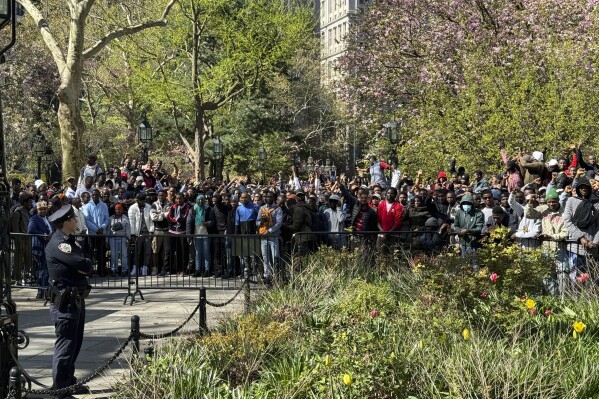Israeli PM announced plans to rebuild areas near Gaza border, not build inside the territory

FILE - Israeli Prime Minister Benjamin Netanyahu attends the weekly cabinet meeting in the prime minister’s office in Jerusalem, June 25, 2023. Social media users are falsely claiming that Netanyahu announced this week that Israel plans to build settlements in the Gaza Strip. (Abir Sultan/Pool Photo via AP, File)
CLAIM: A video shows Israeli Prime Minister Benjamin Netanyahu announcing in Hebrew plans to build settlements in the Gaza Strip, with a $5 billion investment from the U.S.
AP’S ASSESSMENT: False. Netanyahu’s comments were translated incorrectly in English captions added to the video. He was referencing a five-year, $5 billion plan approved by the Israeli government on Wednesday to rebuild communities near the Gaza border, in the country’s Western Negev region. Netanyahu does not mention a U.S. investment.
THE FACTS: Social media users are using the miscaptioned video of Netanyahu speaking at the start of an Israeli Cabinet meeting on Wednesday to make erroneous claims about the alleged settlement plans.
The captions read in part: “Today the Cabinet will approve a plan to rebuild the settlements of the Gaza Strip. We will invest a very large sum of 19 billion shekels to make the settlements of the Gaza Strip available to generations.”
“BREAKING: Why did Israel commit the genocide in Gaza?” asks one X post that shared the video. Following an emoji of a finger pointing down next to the words “the answer,” the post continues: “Netanyahu unveils plans to construct settlements in Gaza, backed by a staggering investment of USD 5 billion.”
It had received approximately 12,000 shares and more than 8,900 shares as of Friday.
But the translation of Netanyahu’s words is incorrect. He was referencing development plans for Israeli land near the Gaza border in the country’s Western Negev region, not within Gaza.
“Today, the government will approve the Tekuma Plan to rebuild the communities in the Western Negev,” he says, speaking in Hebrew. “We will invest the very large sum of 19 million shekels in order to move the communities of the Western Negev forward for generations.”
Netanyahu does not mention any U.S. investment that will go toward this five-year, $5 billion plan. Posts provided no evidence that U.S. funds will be used.
He concludes: “We will invest in housing, infrastructure, education, employment, medicine and more. The Hamas terrorists sought to uproot us. We will uproot them and deepen our roots. We will build the Land of Israel and safeguard our state.”
“The prime minister was talking about the Western Negev in Israel proper,” David Baker, a spokesperson for Netanyahu, told The Associated Press. “He was not talking about the Gaza Strip.”
Baker continued: “We’re talking about funding for Israeli projects within the state of Israel.”
Netanyahu began his remarks by saying he met Wednesday with foreign leaders. He thanked them for their countries’ support, but said Israel would make its own call on how to respond to an unprecedented air assault from Iran earlier this week, despite “all sorts of suggestions and advice,” which was mistranslated in the video spreading online as “objections.”
“I want to be clear: we will make our decisions ourselves. The state of Israel will do whatever is necessary to defend itself,” Netanyahu said.
An apparent Israeli drone attack near a major air base and a nuclear site around the central city of Isfahan activated Iranian air defenses early Friday, just days after Iran’s assault on Israel. No Iranian official directly acknowledged the possibility that Israel had attacked, and the Israeli military did not respond to a request for comment.
In response to Israel’s devastating military offensive in Gaza that was triggered by murders and atrocities perpetrated by Hamas militants in southern Israeli towns on Oct. 7, South Africa went to the United Nations’ top court and accused Israel of genocide.
Israel has vehemently taken issue with South Africa’s claims, arguing that it is acting in self-defense against what it calls the genocidal threat to its existence posed by Hamas, the AP has reported.
The International Court of Justice in January ordered Israel to do all it can to prevent death, destruction and any acts of genocide in Gaza, but stopped short of ordering an end to the military offensive.
___
This is part of the AP’s effort to address widely shared false and misleading information that is circulating online. Learn more about fact-checking at AP.


